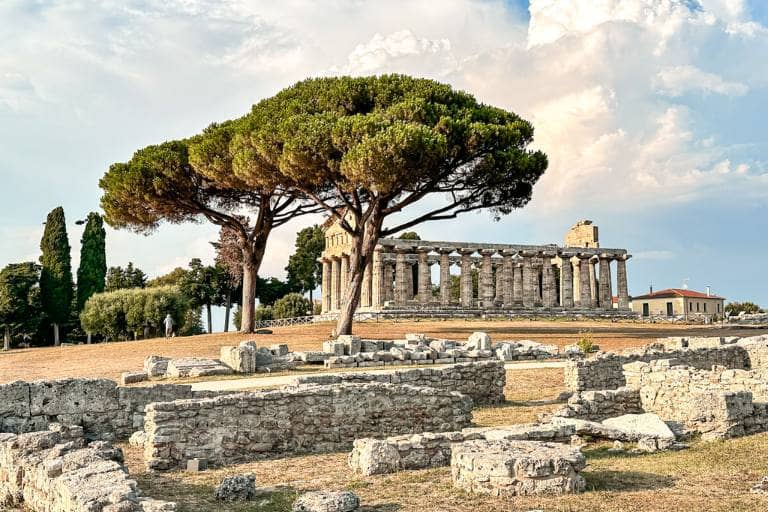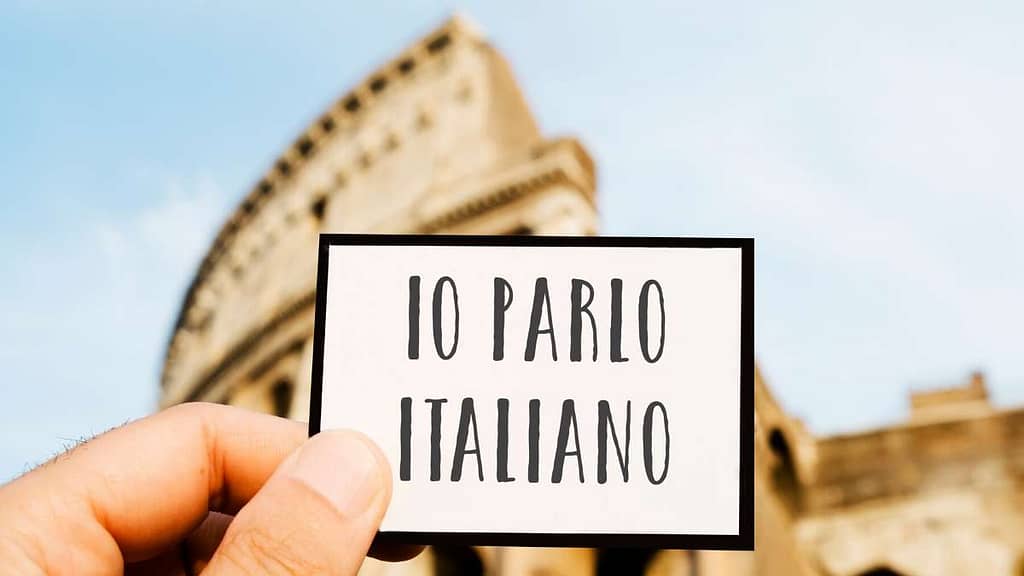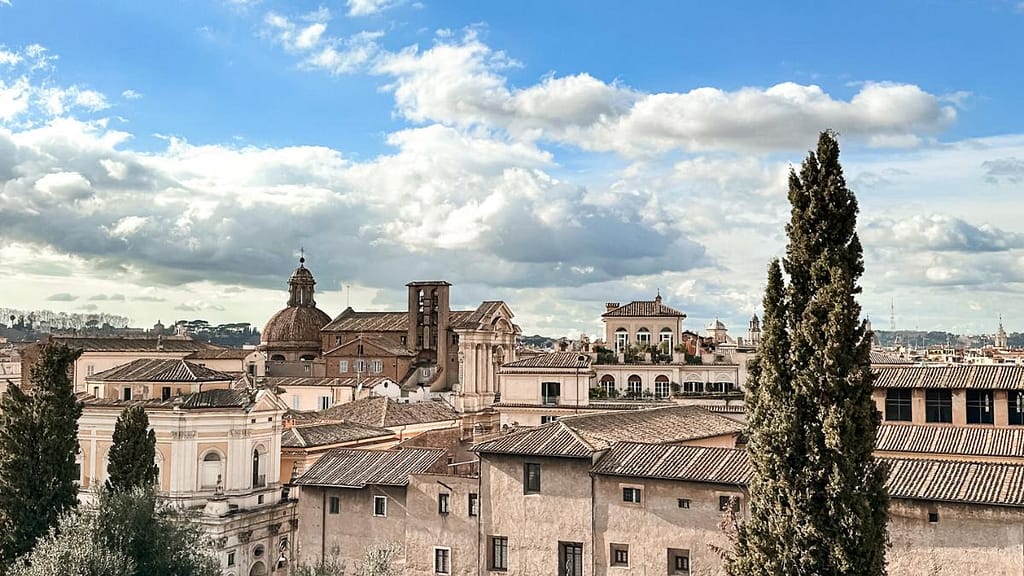Italy is such a popular destination that qualifying anything here as a “hidden gem” might seem unthinkable. Yet, there are many towns in Italy that many tourists don’t know about. Think about it, most people travelling to Italy go to the places they know about, which means the main tourist attractions that everyone else goes to. So, how can you find hidden gems in Italy?
That’s not an easy question to answer, as we haven’t seen everything the country has to offer. We can, however, give you some ideas on how to see Italy off the beaten path or at least find less touristy places to explore. Remember that touristy places are popular for a reason, and there is nothing wrong with wanting to see them, especially when coming to Italy for the first time. If you’re looking to go beyond the main touristy places, then this post is for you.
This post may contain compensated links. Find out more info in our DISCLAIMER.
What exactly qualifies as a hidden gem?
These days, the term “hidden gem” can feel a bit overused, as many places become referred to as such. Not many places are truly undiscovered these days, as many are very well-known to locals. So, what exactly does it mean?
A hidden gem destination is a place that flies under the radar of mainstream tourism but offers something special to those who discover it. Another way to think about it is that hidden gems are destinations that deserve to be more well-known and haven’t been overrun by mass tourism yet.
Of course, the more popular a hidden gem gets, the less hidden it becomes. So, the very act of discovering hidden gems can sometimes lead to their becoming less hidden. But that doesn’t take away from the allure of finding a place that feels undiscovered. The essence remains – a place that offers a delightful surprise for those who find it.
Here’s what makes a place qualify
- Undiscovered (or lesser-known): It’s not a household name and likely not featured in most guidebooks or heavily advertised.
- Unique charm: It possesses something special or distinctive, whether it’s stunning natural beauty, fascinating history, or a vibrant local culture.
- Authentic experience: You get a more genuine feel for the place, away from the tourist traps. This can mean interacting with locals, trying regional cuisine, or experiencing traditions.
Is there such a thing as hidden gems in Italy?
Despite Italy being at the top of many people’s travel lists, there are many places where foreign tourists rarely venture. Think about it – while the Colosseum and Leaning Tower of Pisa are world-famous, countless medieval hilltop towns, stunning coastal villages, and lesser-known archaeological sites are waiting to be explored.
So, while Italy is a popular destination, there are still plenty of hidden gems to discover for those willing to look beyond the usual tourist spots. Here’s why:
- Vast and diverse: Italy has a rich history and culture, with countless regions, towns, and villages, each with a unique character. Popular tourist destinations are just a fraction of what the country offers.
- Small towns and villages: Many charming towns and villages exist outside the usual tourist circuits. These places offer a glimpse into a more authentic Italian way of life.
- Hidden in plain sight: Sometimes, hidden gems can be found even in popular areas. A small family-run restaurant tucked away in a side street, or a historical landmark overshadowed by a more famous neighbor could be considered gems.
- Local Focus: If you look beyond the big-name attractions, hidden gems are focused on specific interests, like local wineries, unique museums, or lesser-known historical sites. There are bound to be smaller towns or regions that specialize in these and offer an exceptional experience.
Think about it this way: Tuscany is famous for its rolling hills and vineyards, but hidden gems in other regions, like Puglia or Basilicata, offer similar beauty from a different perspective. So, while Italy has its fair share of tourist hotspots, there are still plenty of hidden gems waiting to be discovered by curious travellers.
Tips for seeing Italy off-the-beaten-path
There is no denying that Italy is a treasure trove of cultural wonders, from bustling piazzas to ancient ruins. It’s a magical place where history lives on every corner. You can throw a proverbial rock and hit an ancient site. We travelled to Italy many times before we moved here and have explored even more since, and we’re still finding new gems all the time.

While you might not have the time to explore all of Italy (sadly, that’s also not possible even for us), you can plan your visit to make the best of it. As already mentioned, if you’re coming to Italy for the first time, you might want to visit all the main sites, but if you’re coming back or want to see something different, here are some tips to steer you towards a more unique and unforgettable Italian adventure:
- Rent a car and explore charming villages: Italy has a robust public transport network, but relying only on buses and trains can be limited in rural areas. Renting a car can allow you to discover hidden gems at your own pace. You’ll be able to get to places where others might not be able to if they weren’t driving. Skip the big-name cities and opt for smaller towns steeped in local traditions by driving in Italy.
- Explore by region: Instead of following the main tourist trail, focus on exploring specific regions more intimately. Each one boasts its own distinct character, history, and cuisine. For example, Puglia in the south offers a beautiful coastline, charming villages with unique architecture (like Alberobello’s trulli houses), and delicious seafood.
- Venture to less-visited regions: Some of the least-visited regions in Italy offer a lot of charm, stunning landscapes, historic towns and mouthwatering food. Skip Tuscany, Lazio and Veneto and head to Molise, Basilicata, Calabria or Valle d’Aosta for an unforgettable adventure.
- Seek local recommendations: Talk to Italians! Shopkeepers, hotel staff, restaurant owners, and people you meet in your travels can offer hidden gem recommendations based on their passions. They will be able to tell you about places you’re not likely to find in a guidebook, the real hidden gems in Italy.
- Embrace slow travel: Italy is a country meant to be savoured. Don’t rush from place to place. Cramming too much into your itinerary is a mistake many people make when coming to Itlay. Linger in a charming piazza, enjoy a leisurely lunch, and soak up the atmosphere. Base yourself in a central location and explore the surrounding area, soaking up the local atmosphere.
Less touristy places in Italy to explore
Most places in Italy will have tourists. While there might not be many North Americans or people from other continents, you’re likely to encounter Italian tourists or other Europeans. Remember that a “hidden gem” is something new to you that still offers a great experience. Here are some examples of hidden gems in Italy we think you should explore.
Hidden gems in Italy, towns and cities
Matera, Basilicata: While Matera has gained popularity lately, thanks to the last James Bond movie, it’s still a place not many tourists visit. This unique town features cave dwellings (Sassi) carved into the mountainside, some of which have been inhabited since prehistoric times. Today, these Sassi have been transformed into hotels, restaurants and shops.

Bergamo, Lombardy: Often overshadowed by Milan, Bergamo is an underrated city. Divided into two distinct areas, the upper town (Città Alta) and the lower town (Città Bassa), Bergamo is a hidden gem in Lombardy known for its medieval architecture, historic squares, and stunning views of the Italian Alps. You can ride the funicular to the upper town, wander through the narrow streets, and visit the impressive Basilica of Santa Maria Maggiore.

Mantova (Mantua), Lombardy: This charming city in Lombardy is often overshadowed by its more famous neighbours, but it’s a hidden gem with a rich history and stunning architecture. You can wander through the medieval streets of the city center, visit the magnificent Palazzo Ducale, explore the Renaissance-era Palazzo Te, and enjoy the tranquil atmosphere of the surrounding lakes.

Trieste, Friuli Venezia Giulia: Located on the northeastern tip of Italy, Trieste offers a unique blend of Italian, Slovenian and Austrian influences due to its history of being a major port city. You can explore the beautiful Piazza Unità d’Italia, stroll along the waterfront promenade, visit the historic Miramare Castle, and indulge in the city’s diverse cuisine influenced by its multicultural heritage.

Benevento, Campania: Nestled in the hills of Campania, Benevento is a hidden gem with a fascinating history dating back to the ancient Samnites. Known as the city of witches, it also offers well-preserved Roman ruins, including the famous Arch of Trajan and the ancient theatre. You can wander through the charming historic centre and sample the delicious local cuisine, such as the renowned Sannio wines and traditional liqueur called Strega.

Locorotondo, Puglia: This picturesque hilltop town is known for its whitewashed houses, narrow streets, and panoramic views of the surrounding countryside. You can wander through the maze-like alleys of the historic center, admire the stunning baroque architecture, and sample the local wines, including the crisp white wines produced from the Verdeca grape.

Marzamemi, Sicily: Located on the southeastern coast of Sicily, Marzamemi is a charming fishing village with a rich history and stunning coastal scenery. You can stroll along the picturesque harbour, sample fresh seafood at a local trattoria, and savour the moment as you sip your Aperol Spritz.
Hidden gems in Italy, archaeological sites
- Paestum: Located in the Campania region, Paestum is home to some of Italy’s best-preserved ancient Greek temples. Here, you can explore three Doric temples dating back to the 6th and 5th centuries BCE, as well as ancient city walls and a museum showcasing artifacts found at the site.
- Ostia Antica: Often overshadowed by its more famous counterpart in Rome, Ostia Antica was once the bustling port city of ancient Rome. You can explore the remarkably well-preserved ruins of streets, houses, temples, and bathhouses, offering a glimpse into ancient Rome’s daily life without the city center’s crowds.
- Herculaneum: While Pompeii steals the spotlight, nearby Herculaneum offers a more intimate look at Roman life. Buried by the eruption of Mount Vesuvius in 79 CE, Herculaneum’s ruins include well-preserved houses, frescoes, mosaics, and even organic materials like wooden furniture and carbonized food remains.
- Nuragic Complex of Barumini: Located in Sardinia, this UNESCO World Heritage site comprises a complex of well-preserved stone towers known as nuraghe, dating back to the Bronze Age. It offers insights into the mysterious Nuragic civilization that once inhabited the island.
- Etruscan Necropolises of Cerveteri and Tarquinia: These two archaeological sites near Rome are UNESCO World Heritage sites known for their impressive necropolises, which contain tombs dating back to the Etruscan civilization. The tombs are adorned with intricate frescoes depicting scenes from Etruscan life and mythology.
Hidden gems in Italy, landscapes and natural attractions
Gran Sasso National Park: Situated in the Abruzzo region, Gran Sasso National Park is home to the rugged and majestic Gran Sasso mountain range, which includes the highest peak in the Apennines, Corno Grande. You’ll find diverse landscapes here, including high-altitude plateaus, deep valleys, and pristine alpine meadows. It’s the perfect place for outdoor activities such as hiking, mountain biking, rock climbing, and wildlife watching. The park is also known for its rich biodiversity, with rare flora and fauna species, including the Apennine chamois and Marsican brown bear.

Aeolian Islands (Isole Eolie): Located off the northern coast of Sicily, the Aeolian Islands are a volcanic archipelago consisting of seven main islands: Lipari, Vulcano, Salina, Stromboli, Panarea, Filicudi, and Alicudi. Each island offers its unique charm and natural beauty, from Vulcano’s black sand beaches to Salina’s lush green landscapes.

Alcantara Gorge: Located on the island of Sicily, the Alcantara Gorge is a natural wonder formed by the cooling of lava flows from Mount Etna. You can explore the gorge’s towering basalt cliffs, swim in crystal-clear pools of water, and take guided tours to learn about the area’s geology and history.

Sila National Park: Located in the Calabria region, Sila National Park is one of the largest protected areas in Italy and is known for its pristine forests, high-altitude plains and crystal-clear lakes. Here, you can hike through the park’s dense woodlands, go boating or fishing on the tranquil lakes, and spot wildlife such as deer, wolves, and golden eagles.
Conclusion
There are many places that can be considered hidden gems in Italy, depending on who you ask and where you’re coming from. When it comes down to it, experiencing off-the-beaten-path Italy can lead you to discover many gorgeous places and go home with unforgettable memories. Remember, hidden gems are those that are new to you that you get to discover and experience. Make a list of what you’re looking to experience – be that a culinary tour, exploring historic towns or immersing yourself in local culture – and plan your trip accordingly. There are so many great places in Italy, waiting to be discovered by you. Be open to different experiences and enjoy being in the moment. You’ll love it.




